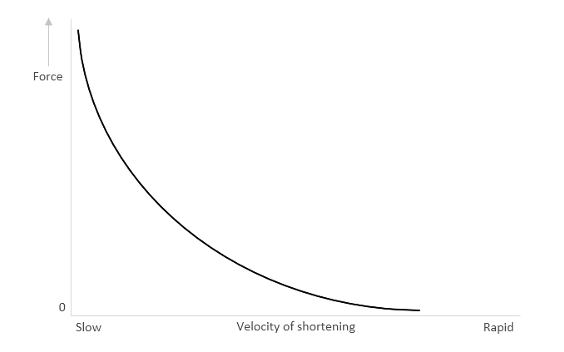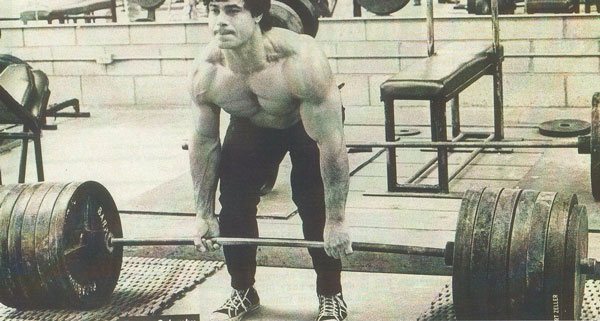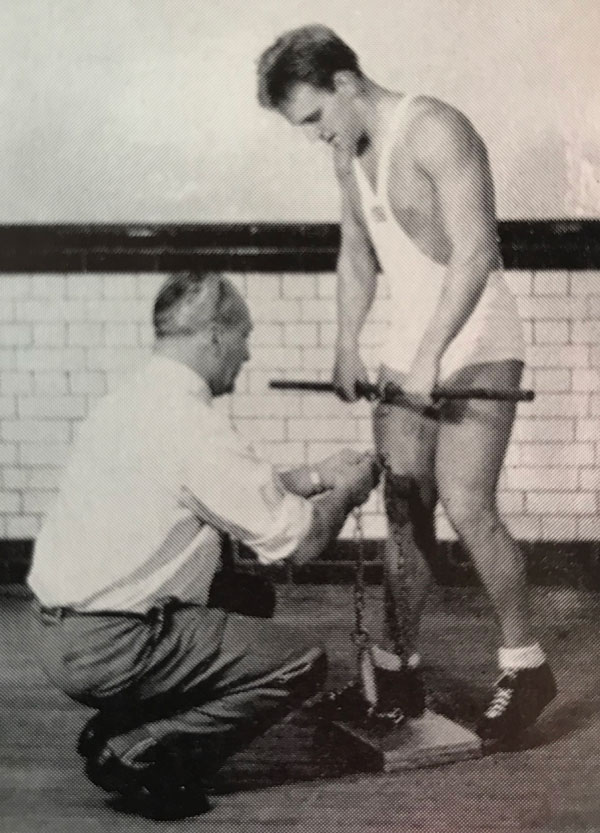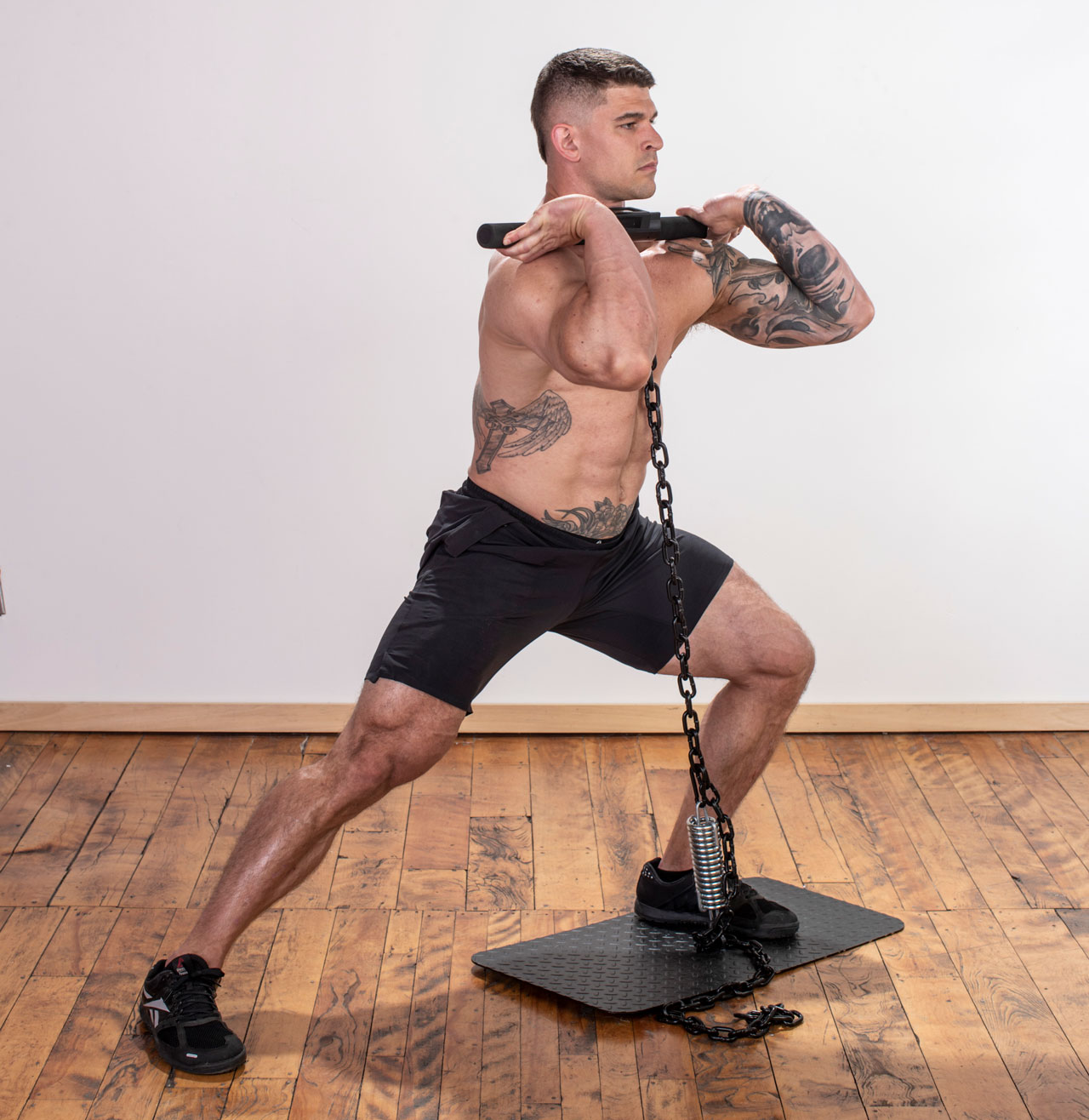Infinite Isometrics - The Force-Velocity Relationship: “Law 1” of Strength
The Dragon Door Research Group

The force-velocity relationship is arguably the most important scientific principle in resistance training. It is literally Law 1 of strength. Yet—outside of a small cadre of athletes and sports scientists—it is barely known at all (and even then, it is typically poorly understood).
This is a tremendous tragedy, because without a solid grasp of this principle, it is it is almost impossible to understand what you are trying to achieve every time you set foot into your training space.
Just as crucially, the force-velocity relationship is absolutely essential to isometric training ideology. It is the equivalent of Newton’s laws of motion to a rocket scientist; the sine qua non without which no true understanding of the discipline can possibly exist. If you are performing any isometrics whatsoever, you need to know about the force-velocity relationship. Sadly, very few isometric athletes comprehend the theory adequately—if at all.
Let us correct this sin of omission together. By the time you have read this article, not only will you fully understand the meaning of the force -velocity relationship, you will also appreciate its importance in your own training.
Basic concepts
Let us begin by defining our basic concepts:
- Force is any push or pull on an object.
- Velocity is speed in a given direction.
Force is the most important quality in any resistance training program—strength training is based on force generation. All strength—all of it—is reducible to terms of force. When we become stronger, we are teaching our muscles to express more force.
Velocity is also related to force. For example, we may express force to press up a barbell loaded with our max, and it moves upwards slowly (i.e., at a low velocity). Alternatively, we can express force to perform an exercise like a punch or kick quite quickly (or at a high velocity).
The force-velocity relationship, stated
As can be seen from the above examples, force and velocity clearly interact. They have a relationship. Our empirical understanding of the functioning of muscle allows us to describe this as the force-velocity relationship. This relationship is expressed mathematically under Hill’s equation:
Don’t worry too much about the math. All you really need to know is that the force-velocity relationship—paraphrased in the form of a law—states that:
There is an inverse relationship between force and velocity.
This means, put simply, that the more force our muscles exert on an object, the slower that object moves. As force goes up, velocity must go down. This relationship is not just something that occurs sometimes, or with some movements—it’s an absolute law of physiology, and it describes all human movement and resistance training unequivocally.
This relationship can also be expressed visually, as a graph:

Graph representing the force-velocity relationship. Maximum force (vertical axis) equals zero velocity (horizontal axis). As the force drops, speed increases. The relationship is expressed as a curve, which is why it is sometimes termed the force-velocity curve.
You will note on the graph that when force approaches its maximum point, velocity drops to zero; in other words, as strength reaches its highest level, movement must stop altogether.
The consequence of this: at the most advanced level, all strength training must become isometric in nature. The more force you express, the stronger you become. If you wish to express maximum force, you need to do it with static drills. This is just math. There is no way around it.
Real-world examples
Scientific equations and graphs can be useful to express ideas with extreme clarity. However, we don’t really require special terminology to understand the force-velocity relationship. All human beings already grasp it intuitively.
Consider this thought experiment; imagine throwing a dart, and then moving a bulky, cast steel anvil. You can throw the dart very fast (high velocity), because it is very light (low force). When it comes to the hefty anvil, however, it’s so heavy (high force) you can probably barely even move it (low velocity). It would certainly be moving many, many times slower than the dart. The relationship between force and velocity is inverse. As one goes up, the other goes down.
Now apply the same principle to resistance training; any example would work, but let’s use the standard deadlift that everyone knows. Imagine pulling the bar as fast as you can; if the bar is empty, you can whip it up at maximum speed. Now, add some weight on the bar, and—no matter how hard you try—the bar will move a bit slower. Add more weight and the bar moves slower still.
At the other end of the force spectrum, if you have ever seen someone grind out an absolute super-heavy personal best, you will see the bar move very slowly—sometimes it takes a lifter agonizing seconds just to complete the lift.

That bar is not going to be moving anywhere at high speed.
Now imagine adding even more weight to the bar; the athlete—red-faced and gasping—might be able to hold onto the bar in the top position, but they wouldn’t be able to lift it up from the floor. Movement is impossible.
This is all the force-velocity relationship at work. The more force your muscles have to generate, the slower they must move. At maximum levels of force, they stop moving altogether.
Strength is force—not power
This idea—that the more strength you use, the slower you must move, until you ultimately stop—might sound strange to an athlete or coach who equates high speed with
power, and power with
strength.
In fact, power and strength—although related, like force and velocity—are distinct qualities. Strength is synonymous with
force, not power. Force just means pushing or pulling on an object. Power equals
force x velocity. The more force you have, the less velocity, so at very high levels of force, power must be low. Great force and great power, therefore, are mutually exclusive.
It is confusing to many that powerlifting has "power" in the sport’s name—powerlifting requires very little power. Rather, powerlifters are the
strongest of all athletes—they utilize very high levels of
force, which is why the barbell typically moves relatively
slowly in most powerlifting events. High velocity is not only unnecessary in effective resistance training, it is impossible.
It might be argued that Olympic weightlifting disproves the force-velocity relationship—because lifts such as the snatch are very heavy, yet still "explosive".
The Ultimate Isometrics Manual corrects this misunderstanding in chapter 7:

Olympic weightlifting is a great sport; it develops strength, power, and flexibility as well as coordination. It is not, however, immune from the force-velocity relationship. As a result of the large weights used, it is impossible for weightlifters to achieve very high velocities, despite their acceleration during the lifts. The more weight you use, the slower you must move.
When an expert weightlifter performs a snatch, for example, the velocity of the bar tops out at around 1.6 meters per second. In terms of human speed, that is not very fast: a trained boxer can punch at 14 meters per second.
The impressiveness of weightlifting speed relative to the weight on the bar is also misleading: the most explosive portion of an Olympic lift does not occur when the athlete lifts the heavy bar, but when he or she pulls him or herself under the bar.
It is an ironic quirk of history that Olympic weightlifters—the fastest-moving of all strength athletes—were the first to explore the potential of heavy isometrics. As it turns out, they were right to do so; heavy isometrics—literally, training while not moving—actually makes athletes radically faster and more explosive. The biology behind this paradox will be discussed in a future article in this series.
Applications for resistance training
What is the goal of resistance training? The major goals are typically strength gain or muscular hypertrophy (growth), or both. The application of force is essential in meeting both of these goals:
- Teaching the body to apply the highest possible levels of force is what increases strength—according to Hebbes’s law (another central principle of strength science, which we will be covering later in this series).
- Hypertrophy—muscle growth—is primarily the product of force (as tension) over time. This occurs according to Henneman’s size principle (which, again, we will be covering in a later article).
As we can see then, force is
absolutely fundamental to strength and muscle gain. If you are training for optimal results, force is your friend. In an ideal world,
you want to be able to apply as much force as possible during your training sessions. This notion is probably accepted by most coaches and athletes, who appreciate that force is synonymous with strength. (If you disagree with this, ask yourself—if you are able to use less and less force during your strength training, is it working?)
What most coaches and athletes don’t seem to understand is the corollary of that statement: if you wish to train with the highest forces possible,
you must train as slowly as possible—with the ideal speed being zero.
If you have understood the force-velocity relationship, as described above, you will also understand that this is true. The more force you use, the slower you move, until—at maximum levels—your movement stops. If you are serious about using more force, you must embrace the idea of static training.
This doesn’t mean
deliberately slowing down your movements. Simply adding more weight to your exercises will inevitably make you slower—you have no say in this. Your goal should always be to use enough force in your training that positive motion is
impossible, no matter how hard you try. This is true isometrics.
In developing the
Isochain, the
Dragon Door Research Group worked with multiple athletes who were all deeply committed to using more and more force in their workouts. However, most of them associated force with
movement; they were incorrectly conflating force, speed, and power. It was only once they had a thorough grasp of the force-velocity relationship that they realized that their ideas about moving weight (sometimes quickly) were simply holding back their potential force levels. Once the penny dropped, all our athletes began exploiting the power of isometrics, and have continued using isometric drills in their training.
Implications for Results
If you have the notion embedded in your brain that you need to move weights up-and-down during your training, all you are doing is limiting your force levels. Because your results are relative to the amount of force you are using in your workouts, you are also limiting your own strength and muscle development.
The converse is also true. As soon as you begin exploiting isometric drills, your training results will become amplified—perhaps more dramatically than you think. Increases in 115-135% in absolute strength (over a broad range of drills) are not uncommon in lifters new to isometrics over a 10-12-week period. Numerous studies have demonstrated this, as has our own research. Isometrics is the most effective form of strength development known to man. (Imagine it…more than doubling your strength in a matter of weeks! It is not only possible, but very attainable with the scientific application of isometrics.)

Massive improvements in strength are also common even in advanced athletes. In
this article, Chrys Johnson details how he increased his absolute strength by 65% in just 30 days.
If you wish to gain these kinds of seemingly superhuman results from scientific isometric training, there are a few rules you must follow:
- You must be willing to push very hard;
- you must know how to utilize correct technique to place the stress-forces on the muscles, rather than the skeletal structure;
- you must alter your training program every 6-12 weeks to avoid accommodation; and
- You must be able to accurately measure your progress for biofeedback/motivational purposes, and in order to titrate your training volume and frequency for optimal results.
This last rule is of particular importance. It is what really separates traditional isometrics athletes from the new generation, who are able to digitally measure the forces (and other factors) involved in their training to produce radical transformations in strength. This kind of new wave, measurable isometric training is only possible with an
Isochain.
Back